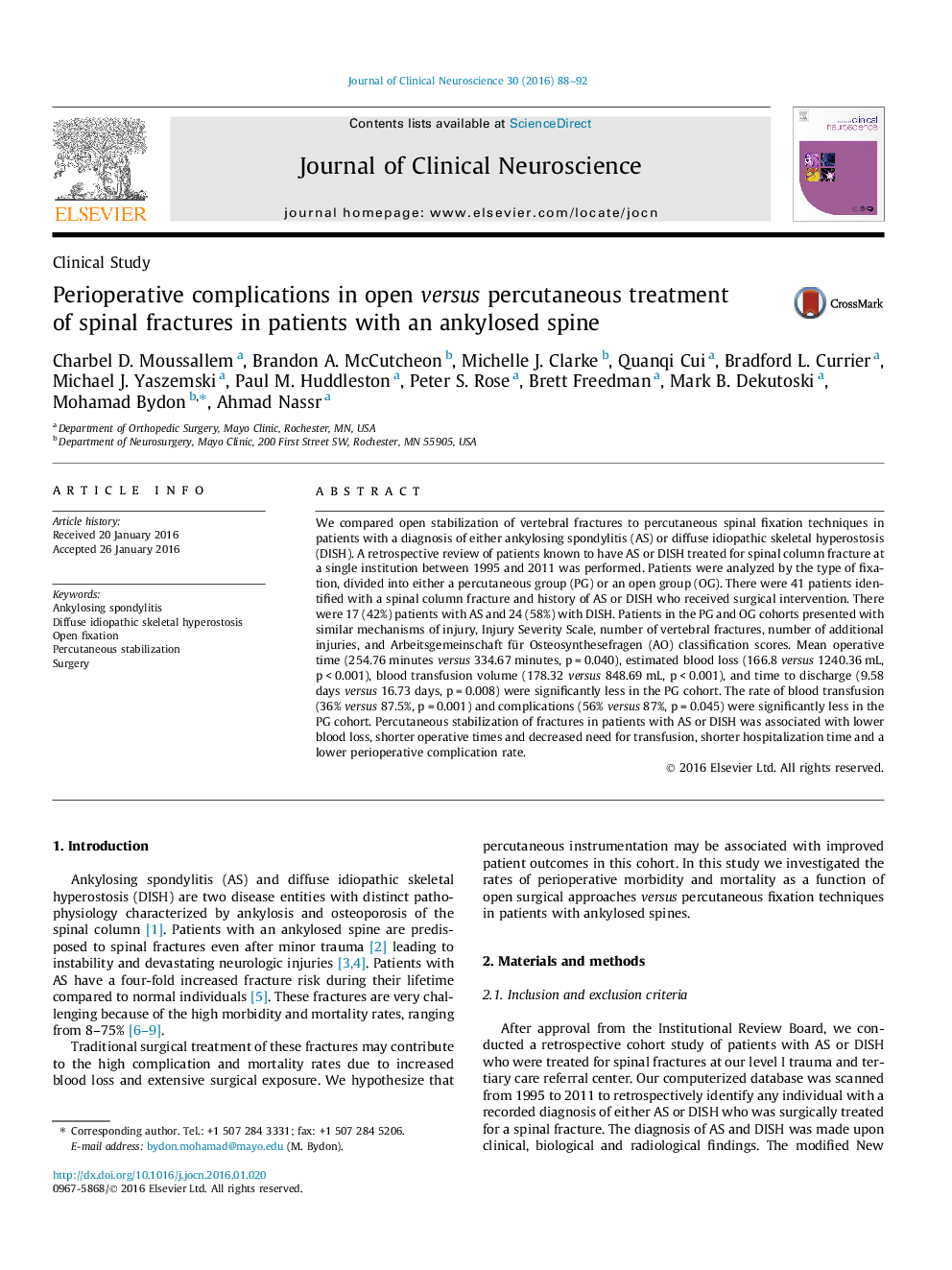| Article ID | Journal | Published Year | Pages | File Type |
|---|---|---|---|---|
| 3058145 | Journal of Clinical Neuroscience | 2016 | 5 Pages |
•Patients with ankylosing spondylitis or diffuse idiopathic skeletal hyperostosis and vertebral fracture were studied.•We compared open stabilization of vertebral fractures to percutaneous spinal fixation techniques.•Cohorts had similar mechanisms of injury, Injury Severity Scale scores, AO grade, number of vertebral fractures and additional injuries.•Percutaneous stabilization was associated with lower blood loss, shorter operative times and decreased need for transfusion.•Percutaneous stabilization was associated with shorter hospitalization time and a lower perioperative complication rate.
We compared open stabilization of vertebral fractures to percutaneous spinal fixation techniques in patients with a diagnosis of either ankylosing spondylitis (AS) or diffuse idiopathic skeletal hyperostosis (DISH). A retrospective review of patients known to have AS or DISH treated for spinal column fracture at a single institution between 1995 and 2011 was performed. Patients were analyzed by the type of fixation, divided into either a percutaneous group (PG) or an open group (OG). There were 41 patients identified with a spinal column fracture and history of AS or DISH who received surgical intervention. There were 17 (42%) patients with AS and 24 (58%) with DISH. Patients in the PG and OG cohorts presented with similar mechanisms of injury, Injury Severity Scale, number of vertebral fractures, number of additional injuries, and Arbeitsgemeinschaft für Osteosynthesefragen (AO) classification scores. Mean operative time (254.76 minutes versus 334.67 minutes, p = 0.040), estimated blood loss (166.8 versus 1240.36 mL, p < 0.001), blood transfusion volume (178.32 versus 848.69 mL, p < 0.001), and time to discharge (9.58 days versus 16.73 days, p = 0.008) were significantly less in the PG cohort. The rate of blood transfusion (36% versus 87.5%, p = 0.001) and complications (56% versus 87%, p = 0.045) were significantly less in the PG cohort. Percutaneous stabilization of fractures in patients with AS or DISH was associated with lower blood loss, shorter operative times and decreased need for transfusion, shorter hospitalization time and a lower perioperative complication rate.
